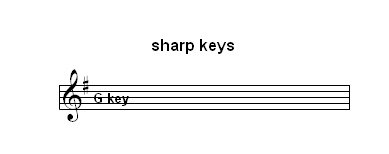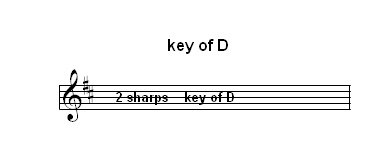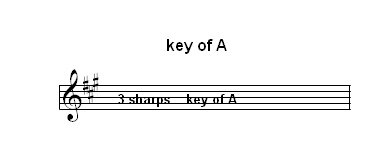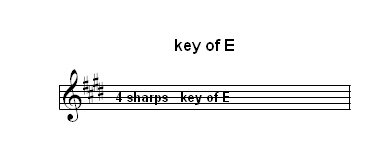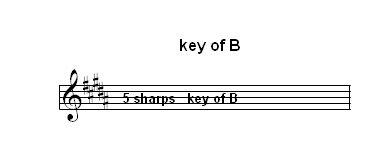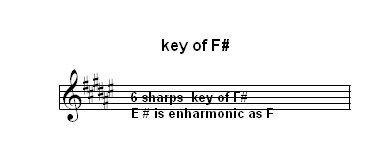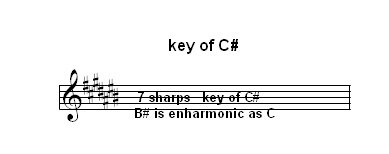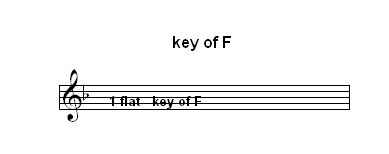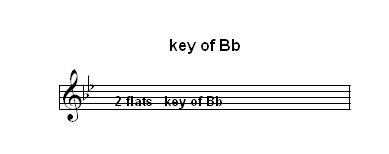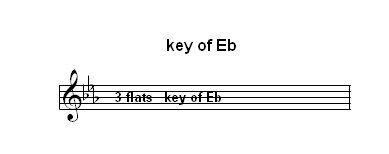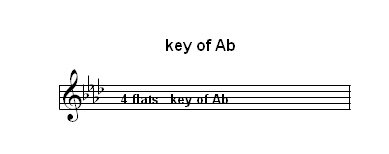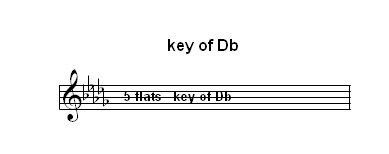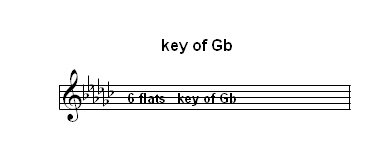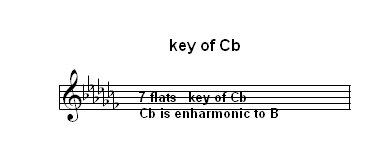|
Piano Key Chart
At the beginning of each clef is the key signature, or piano key chart. The key signature can have sharps or flats. In this piano lesson, you learn to find a key. Some keys are denoted by the number of notes that have sharps. Other keys are denoted by the number of notes with flats. There are 12 keys per octave. C D E F G A B seven white notes C# D# F# G# A# five black notes You can call the five black notes Db Eb Gb Ab Bb In any of these keys they may be major keys or minor keys. You can tell what key the song is in by the number of sharps for some keys and by the number of flats for other keys. THE KEY SIGNATURES WITH SHARPS The key of G major has one sharp F#. The key of D major has two sharps F# C#. The key of A major has three sharps F# C# G#. The key of E major has four sharps F# C# G# D#. The key of B major has five sharps F# C# G# D# A#.
Look at the last sharp in the key signature and the key will be a half step up from it. F# go up a half step to G the key is G. C# go up a half step to D the key is D. D# go up a half step to E the key is E. A# go up a half step to B the key is B. G# go up a half step to A the key is A. Sharps in the key signature increase by a fifth interval as in from F# to C#. Then C# goes to G#. Then G# goes to D#. Then D# goes to A#. For a description of intervals, go to the Intervals page on the menu.
There is one sharp F#. This is the Key of G.
There are two sharps F# C#
There are three sharps F# C# G#
There are four sharps F# C# G# D#
There are five sharps F# C# G# D# A#
ENHARMONIC NOTES are the same notes reached by going up a half step as in C# or going down a half step as in Db. C# and Db same black note D# and Eb same black note F# and Gb same black note G# and Ab same black note A# and Bb same black note What if you have E#? A half step up from E is F. What if you have B#? A half step up from B is C. Remember there are no black notes between the white notes from E to F and from B to C. E# is the same note as F. B# is the same note as C. What if you have Cb? You go down a half step from C to the next note which is B. What if you have Fb? You go down a half step from F to the next note which is E.
KEY SIGNATURES WITH FLATS There are key signatures that have flats. The key of F is defined by having one flat in the key. The one flat is Bb.
Then you may see a key signature with 2 flats in it, Bb and Eb. The key of Bb is defined by having two flats in it, Bb and Eb.
Starting with 2 flats you can find the key it is by looking at the next to last flat. If you see Bb and Eb, the next to last flat is Bb. The key is Bb. When you find a key signature with 3 flats, Bb, Eb, and Ab. It is in the key of Eb. Flats increase by a fourth interval as in from Bb to Eb. Then Eb goes to Ab. Then Ab goes to Db. Then Db goes to Gb.
Then you may see a key signature with 4 flats, Bb, Eb, Ab, and Db. It is in the key of Ab.
A key signature with 5 flats, Bb, Eb, Ab, Db, and Gb has Db as its key.
Cb is enharmonic to B.
Fb is enharmonic to E.
Remember that the flats increase by a fourth interval as in from Bb to Eb. Sharps increase by a fifth interval as in from F# to C#. Then C# goes to G#. Then G# goes to D#. Then D# goes to A#.
Another way to remember the flats is by the word BEAD. Bb goes to Eb, Eb goes to Ab, and Ab goes to Db. Remember that the key of F has one flat in it, or Bb. Next lesson is Symbols
|



